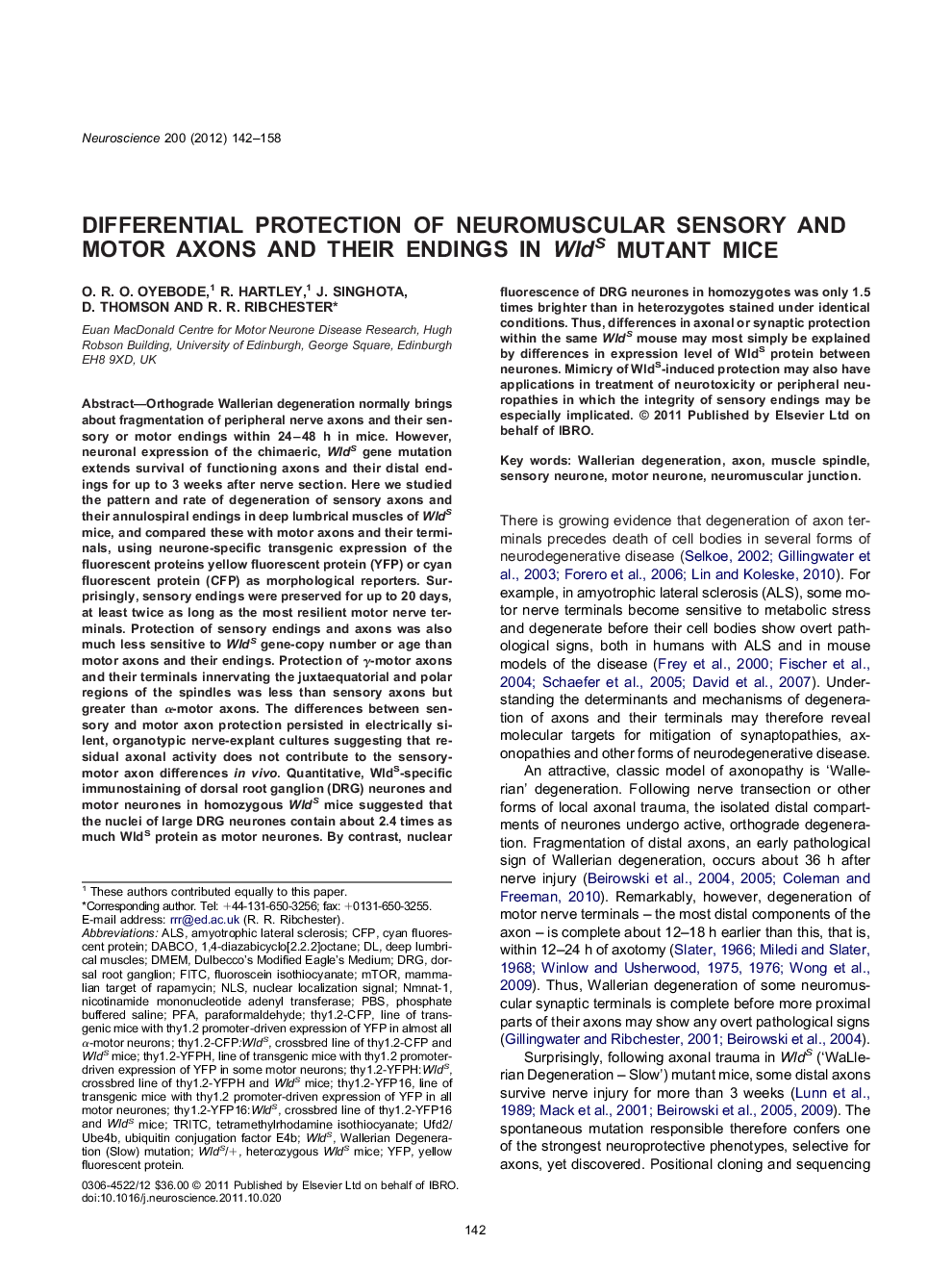| کد مقاله | کد نشریه | سال انتشار | مقاله انگلیسی | نسخه تمام متن |
|---|---|---|---|---|
| 4338639 | 1614876 | 2012 | 17 صفحه PDF | دانلود رایگان |

Orthograde Wallerian degeneration normally brings about fragmentation of peripheral nerve axons and their sensory or motor endings within 24–48 h in mice. However, neuronal expression of the chimaeric, WldS gene mutation extends survival of functioning axons and their distal endings for up to 3 weeks after nerve section. Here we studied the pattern and rate of degeneration of sensory axons and their annulospiral endings in deep lumbrical muscles of WldS mice, and compared these with motor axons and their terminals, using neurone-specific transgenic expression of the fluorescent proteins yellow fluorescent protein (YFP) or cyan fluorescent protein (CFP) as morphological reporters. Surprisingly, sensory endings were preserved for up to 20 days, at least twice as long as the most resilient motor nerve terminals. Protection of sensory endings and axons was also much less sensitive to WldS gene-copy number or age than motor axons and their endings. Protection of γ-motor axons and their terminals innervating the juxtaequatorial and polar regions of the spindles was less than sensory axons but greater than α-motor axons. The differences between sensory and motor axon protection persisted in electrically silent, organotypic nerve-explant cultures suggesting that residual axonal activity does not contribute to the sensory-motor axon differences in vivo. Quantitative, WldS-specific immunostaining of dorsal root ganglion (DRG) neurones and motor neurones in homozygous WldS mice suggested that the nuclei of large DRG neurones contain about 2.4 times as much WldS protein as motor neurones. By contrast, nuclear fluorescence of DRG neurones in homozygotes was only 1.5 times brighter than in heterozygotes stained under identical conditions. Thus, differences in axonal or synaptic protection within the same WldS mouse may most simply be explained by differences in expression level of WldS protein between neurones. Mimicry of WldS-induced protection may also have applications in treatment of neurotoxicity or peripheral neuropathies in which the integrity of sensory endings may be especially implicated.
▶The WldS mutation protects annulospiral endings of spindles more strongly than motor terminals. ▶Protection of sensory endings is relatively insensitive to age or WldS gene-copy number. ▶Differences in sensory-motor protection correlate with WldS protein levels in neuronal nuclei. ▶Sensory neuropathies may be particularly responsive to treatments that mimic the WldS phenotype.
Journal: Neuroscience - Volume 200, 3 January 2012, Pages 142–158